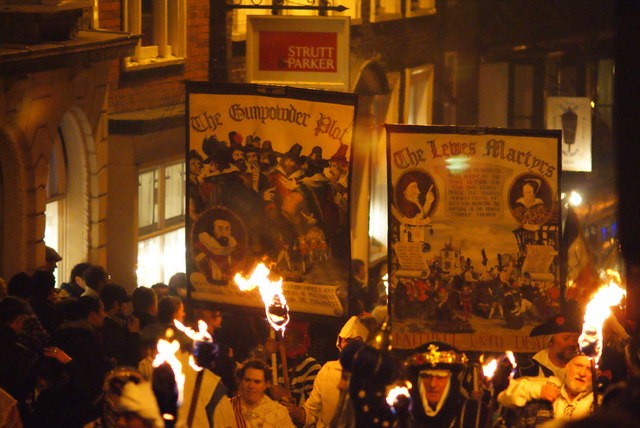Bonfire Night is a truly British celebration, but what’s the story behind this bizarre tradition of setting off fireworks, lighting bonfires and burning effigies of Guy Fawkes on the 5th November? With our HQ being set in the beautiful Sussex countryside just a few miles down the road from the town of Lewes, which dubs itself the bonfire capital of the world, we feel we are well placed to give you the low down on its heritage. So, let us explain.
The history of Bonfire Night, or what is often referred to as ‘Fireworks Night’ or ‘Guy Fawkes Night’, comes from events which took place on the 5th November back in 1605. Now, nobody will ever know the full and whole truth surrounding the events that took place on this day, however the basics we can be fairly sure of. ‘The Gunpowder Plot’ was a plan which was formed to blow up parliament at the Palace of Westminster.
Legend has it that Guy Fawkes, one of many conspirators who hatched ‘The Gunpowder Plot’, was caught red handed whilst guarding barrels containing said gunpowder. Guy Fawkes was a Catholic, and during this time Roman Catholics were very frustrated and angry due to King Henry VIII causing upheaval with the Reformation. This frustration was the root cause of the plot being formed and was intended to kill King James l, along with his queen, heir and many ministers and MPs who were inside the Palace of Westminster, enabling the Catholics to take over England and restore a Catholic monarchy.

The plan itself was straight forward. The conspirators had rented a cellar, that had an extension which lead right under the Palace. It’s useful to note that back then the cellar was what we now refer to as the 1st floor, and it was here that they kept many barrels of gunpowder in readiness to blow up Westminster.
This plot itself was extremely ambitious and is possibly the most famous attack on parliament and the Church in British history. Despite the ambition there were some large flaws which blighted the plot. To start with some of the conspirators were known to the authorities already due to a previous incident, which certainly didn’t help matters. However, the biggest weakness was that one of conspirators, Francis Gresham, had a brother in law called Lord Monteagle who was an MP and was at risk of dying in the explosion. Gresham wrote a letter to this brother in law warning him not to go to the Palace of Westminster on the 5th November as ‘a terrible blow’ was to occur.
Lord Monteagle alerted the authorities which resulted in the basement at the Palace of Westminster being searched the night before the plot was set to be carried out. It was there that they found Guy Fawkes in the cellar guarding the barrels containing gun powder. Once captured, Fawkes was then tortured by way of getting information. Despite this torture he refused to reveal the names of his conspirators. The other conspirators were captured after managing to escape London. Guy Fawkes and the other conspirators were executed in 1606 for treason, by being hung drawn and quartered.
An act of parliament was subsequently passed to say that each year the 5th November would be a day of thanksgiving and remembrance, hence to this day why annual celebrations take place across the UK on this date.
As the old saying goes:
Remember, remember the Fifth of November,
The Gunpowder Treason and plot,
I know of no reason why the Gunpowder Treason
Should ever be forgot.






































